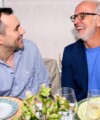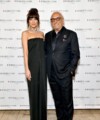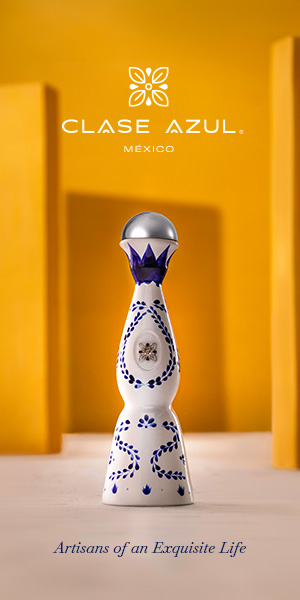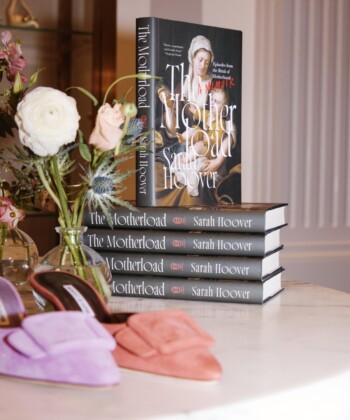We caught up with Sally Hogshead, an advertising executive turned bestselling author, to find out about her new book, How the World Sees You: Discover Your Highest Value Through the Science of Fascination (available July 15). Hogshead believes that once you understand how you present to the world around you, what kind of first impression you make as well as your strengths and weaknesses, you can become much more successful. In her book, Hogshead poses questions that help you describe yourself through archetypes—whether it be rock star, guardian, maestro, defender, artisan, trendsetter, mediator, beloved and the list goes on. From there, you craft an anthem, and you’re on your way.

What did you see in your business and your life that made you think that this system would help people?
I used to be a creative director on brands like Harry Winston, Nike, Coca Cola and Godiva, and I thought that brands became more valuable when they understood two things. First, how is the brand different and what sets it apart from others in the marketplace? Second, what does the brand do best? So I took this understanding of how I developed ads and campaigns for brands and looked at how we evaluate ourselves as people.
And it’s very different?
We, as individuals, as professionals, tend to concentrate on how we see the world. Brands don’t look at how they see the world; brands look at how the world sees them. So I took what I knew from branding and did about a decade of research. I began looking at the cues that people intentionally or unintentionally send that shape their listeners’ perceived value, just as my client Godiva or Harry Winston would. I measure how the world sees you at your best and what qualities are most valuable and most differentiating, so that you can set yourself apart and make sure that you’re perceived at your highest value right away.
How did you do this research? What was your governing principle in figuring out the categories people fit into?
I knew from a decade of work as a creative director how great brands work. But in 2004 I began studying exactly what makes one brand more fascinating than the other, and the results were published in my last book, Fascinate: Your 7 Triggers to Persuasion and Captivation. In that research, we measure how much the ability to fascinate was actually worth. We found people will pay four times more for a product or brand that they find intensely fascinating. In other words, if you give a woman two pairs of sunglasses that are exactly the same, but one pair has a Chanel logo, she’ll pay four times more for the Chanel logo because she perceives it as being better even though the utility of those sunglasses are exactly the same.

Sally Hogshead, photograph by Tiffany Matson
What made you decide to write another book?
Everybody kept coming up to me and saying, “Hey, what about me? What makes me fascinating?” So I began looking into this. I measured 30,000 people as my data test and I found that there are these hidden patterns within our communication and if you understand what hidden patterns are happening when you communicate, you can begin to understand how people see you and what they value in you.
Do you think that many people are not making a great first impression?
What we do when we meet people is we follow a script. We follow the same choreography that people have followed for a hundred years, which is we smile, we shake hands, we make eye contact and then we talk about something neutral for a few minutes. We’re kind of testing each other out. The problem is that today the attention span has become so short that people only focus on you for nine seconds. You really need to learn how to frontload your value. You have to understand how you can instantly contribute to the other person and add value to them, but people don’t know how to do this.
It’s not the listener’s job to figure out why they should talk to you. It’s your job to earn their attention, and the way you do that is by understanding what are the most naturally fascinating qualities within your personality that the other person will respond to most strongly.
How can people use the information in your book to make a better first impression and to achieve other goals in their careers?
The number one most important thing is to understand your own anthem. The anthem is the tagline for the personality. Each of us has specific ways that we’re most likely to deliver value to our employees, to our team, to our clients, to our shareholders.
In your book, you say that a lack of understanding of different people’s value can lead to poor hiring choices.
We hire to replicate ourselves and the problem is then we create lopsided teams that are very, very good at some things and terrible at others. The best teams are not built on similarities but on diversity so that one person has an advantage in certain areas and other people have advantages in other. Imagine if you had a team and you could have a tool that could give each person on your team the perfect words to describe what they do with their highest value—then it would become really easy. On my team, for example, everybody has an anthem. The anthem is posted outside our office. It’s on our email. My anthem is: “I deliver fascinating communication.” That means I’m going to be at my desk when I can deliver fascinating communication and help you know how to fascinate better. But what I’m not good at is being organized, I’m not good at being thorough, I’m not good at being diligent. So on the team that I hired, everybody brings diligence and thoroughness to the party so I don’t have to do those things!
But the key to all of this is understanding your anthem, the tagline of your personality, correct?
We’re doing a program in which we make it available to DuJour readers. They can find out their own highest value by taking the test for free at howtofascinate.com/YOU. The special code for is DuJour14. The free test stays open until the middle of July and you’re are encouraged to share it!
MORE:
Confessions from Public Speaking Boot Camp
How to Never Be Nervous Again
The Biggest Don’ts of Public Speaking










































